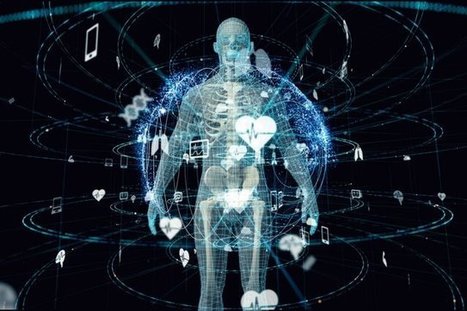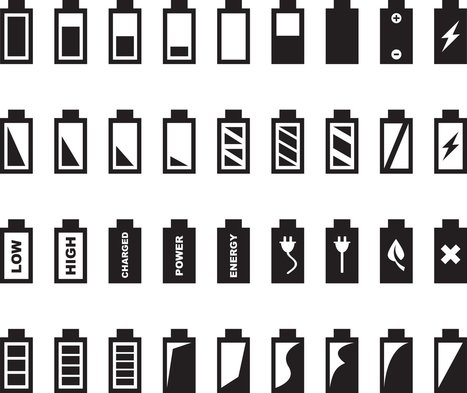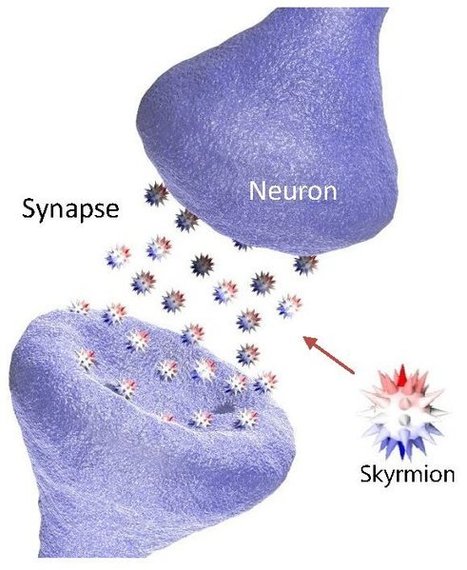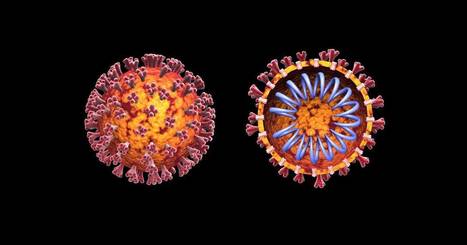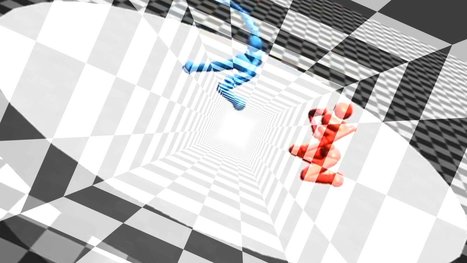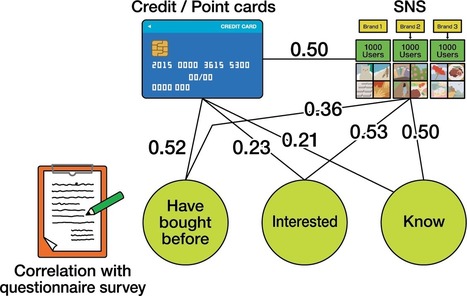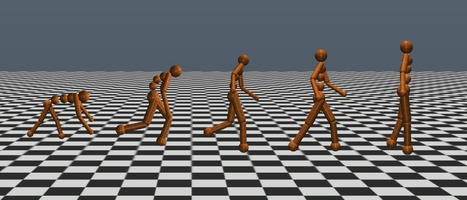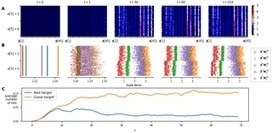Computational costs are one of the main challenges in the adoption of machine learning models. Some of the recent breakthrough models in areas such as deep reinforcement learning(DRL) have…
Follow, research and publish the best content
Get Started for FREE
Sign up with Facebook Sign up with X
I don't have a Facebook or a X account
Already have an account: Login

artificial intelligence for students
14.5K views |
+0 today
Follow
Filter by date
Tags

|
artificial intelligence for students
artificial intelligence for students - postgraduate and undergraduate Curated by Scott Turner |
 Your new post is loading...
Your new post is loading...

|
Scooped by
Scott Turner
April 6, 2020 9:16 AM
|
As technologies like single-cell genomic sequencing, enhanced biomedical imaging, and medical "internet of things" devices proliferate, key discoveries about human health are increasingly found within vast troves of complex life science and health data.

|
Scooped by
Scott Turner
April 6, 2020 8:36 AM
|
Researchers have designed a machine learning method that can predict battery health with 10x higher accuracy than current industry standard, which could aid in the development of safer and more reliable batteries for electric vehicles and consumer electronics.

|
Scooped by
Scott Turner
April 6, 2020 8:35 AM
|
"It's good to hear your voice, you know it's been so long
If I don't get your calls, then everything goes wrong…
Your voice across the line gives me a strange sensation"
— Blondie, "Hanging on the Telephone"

|
Scooped by
Scott Turner
April 1, 2020 4:33 AM
|
Disclaimer: The following is based on my observations of machine learning teams — not an academic survey of the industry. For context, I’m a contributor to Cortex, an open source platform for…

|
Scooped by
Scott Turner
March 31, 2020 12:04 PM
|
A team of Army and industry researchers have developed a metric for neural networks—computing systems modeled loosely after the human brain—that could assess the reliability and confidence of the next generation of artificial intelligence and machine learning algorithms.

|
Scooped by
Scott Turner
March 31, 2020 11:07 AM
|
Skyrmions are ultra-stable atomic objects first discovered in real materials in 2009, which have more recently also been found also to exist at room temperatures. These unique objects have a number of desirable properties, including a substantially small threshold voltage, nanoscale sizes and easy electrical manipulation.

|
Scooped by
Scott Turner
March 31, 2020 5:07 AM
|
Artificial intelligence has already played a vital role in the outbreak since day 1—a reminder for the first time in a while that it can be a tool for good.

|
Scooped by
Scott Turner
March 31, 2020 5:03 AM
|
PNNL employs deep learning strategies to advance Model Predictive Control (MPC), a highly promising solution for intelligent building operations.

|
Scooped by
Scott Turner
March 30, 2020 10:38 AM
|
In machine learning, regularization is a approach used to combat high variance — in other words, the issue of your model learning to reproduce the data, rather than the underlying semantics about…

|
Scooped by
Scott Turner
March 2, 2020 11:32 AM
|
Engineer friends often ask me: Graph Deep Learning sounds great, but are there any big commercial success stories? Is it being deployed in practical applications?
Besides the obvious ones–recommendation systems at Pinterest, Alibaba and Twitter–a slightly nuanced success story is the Transformer architecture, which has taken the NLP industry by storm.
Through this post, I want to establish links between Graph Neural Networks (GNNs) and Transformers. I’ll talk about the intuitions behind model architectures in the NLP and GNN communities, make connections using equations and figures, and discuss how we could work together to drive progress.

|
Scooped by
Scott Turner
March 2, 2020 8:49 AM
|
Researchers at Syracuse University in New York have recently developed a system that can detect the presence of humans in a given environment by analyzing ambient radio frequency (RF) signals. This new system, presented in a paper pre-published on arXiv, employs a convolutional neural network (CNN) trained on a vast amount of RF data.

|
Scooped by
Scott Turner
March 2, 2020 8:43 AM
|
Adversarial attacks against the technique that powers game-playing AIs and could control self-driving cars shows it may be less robust than we thought.

|
Scooped by
Scott Turner
February 19, 2020 2:07 PM
|
Scientific American is the essential guide to the most awe-inspiring advances in science and technology, explaining how they change our understanding of the world and shape our lives.

|
Scooped by
Scott Turner
February 5, 2020 10:17 AM
|
Google's AI scientists have unveiled Meena. Tech watchers are calling it a chatbot breakthrough. Points for responses well matched to human intent. Points for relevant word choices. Points for (gasp) sounding sensible.

|
Scooped by
Scott Turner
February 4, 2020 3:48 AM
|
Rasa cofounder Alan Nichol weighs in on Meena, Google's latest attempt at conversational AI, and what it means for the future of AI assistants.

|
Scooped by
Scott Turner
February 4, 2020 3:08 AM
|
By leveraging neuroevolution to train deep neural networks, Uber AI Labs is developing solutions to solve reinforcement learning problems.

|
Scooped by
Scott Turner
January 29, 2020 3:38 PM
|
How does a self-driving car tell a person apart from a traffic cone? How does Spotify choose songs for my "Discover Weekly" playlist? Why is Gmail's spam filter so effective?

|
Scooped by
Scott Turner
January 28, 2020 3:56 PM
|
The backbone of any large scale ML project starts with a Network… A Neural Network and Here’s all you need to know about them.

|
Scooped by
Scott Turner
January 28, 2020 3:49 PM
|
From
aeon
If you’ve ever tripped up over the term ‘Bayesian’ while reading up on data or tech, fear not. Strip away the jargon and notation, and even the mathematics-averse can make sense of the simple yet revolutionary concept at the core of both machine learning and behavioural economics. As this video from the YouTube channel 3Blue1Brown skilfully explains, at its most basic, Bayes’s theorem is a tool for assessing degrees of probability based on prior conditions. And there are ways to make it altogether more intuitive than the statistical formulas might suggest. Although the theorem dates back to its 18th-century namesake, the English statistician and philosopher Thomas Bayes, it has gained increasing relevance in the Big Data revolution.

|
Scooped by
Scott Turner
January 28, 2020 3:34 PM
|
Animals excel at adapting their intentions, attention, and actions to the environment, making them remarkably efficient at interacting with a rich, unpredictable and ever-changing external world, a property that intelligent machines currently lack. Such an adaptation property relies heavily on cellular neuromodulation, the biological mechanism that dynamically controls intrinsic properties of neurons and their response to external stimuli in a context-dependent manner. In this paper, we take inspiration from cellular neuromodulation to construct a new deep neural network architecture that is specifically designed to learn adaptive behaviours. The network adaptation capabilities are tested on navigation benchmarks in a meta-reinforcement learning context and compared with state-of-the-art approaches. Results show that neuromodulation is capable of adapting an agent to different tasks and that neuromodulation-based approaches provide a promising way of improving adaptation of artificial systems.

|
Scooped by
Scott Turner
January 24, 2020 7:07 AM
|
How would you go about returning books to the correct shelves in a large library with the least amount of walking? How would you determine the shortest route for a truck that has to deliver many packages to multiple cities? These are some examples of the "traveling salesman problem," a type of "combinatorial optimization" problem, which frequently arises in everyday situations. Solving the traveling salesman problem involves searching for the most efficient of all possible routes. To do this easily, we require the help of low-power, high-performance artificial intelligence.

|
Scooped by
Scott Turner
January 21, 2020 2:05 PM
|
Scientific American is the essential guide to the most awe-inspiring advances in science and technology, explaining how they change our understanding of the world and shape our lives.

|
Scooped by
Scott Turner
January 21, 2020 2:00 PM
|
Scientific American is the essential guide to the most awe-inspiring advances in science and technology, explaining how they change our understanding of the world and shape our lives.
Loading



